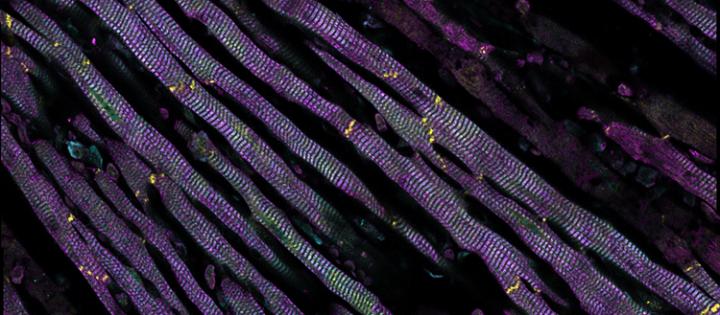Scientists from the Universities of Geneva and Lyon have discovered which molecule is held responsible for tissue necrosis due to an infarctus, and how to reduce the tissue damage by 30% in mice

Credit: © UNIGE
Each year, heart attacks kill almost 10 million people in the world, and more than 6 million die from stroke. A heart attack is caused by a clot that blocks the artery blood flow. Unirrigated tissues are deprived from the oxygen that is carried by the blood. Under these conditions, the affected tissues undergo a rapid necrosis. But why? Scientists at the University of Geneva (UNIGE), Switzerland, the University of Lyon and the Institut National de la Santé et de la Recherche Médicale (Inserm), France, discovered that the synthesis of a lipid, called deoxydihydroceramide, provokes the necrosis. This lipid accumulates in the absence of oxygen and blocks cellular functions. By inhibiting its synthesis in a mouse suffering a heart attack, the biologists were able to reduce the tissue damage by 30%. These results, published in Nature Metabolism, suggest a new model of treatment for victims of a heart attack or stroke.
Heart attack and stroke are the primary cause of death worldwide. When a blood clot forms, it blocks the blood vessel and blood circulation. The non-irrigated tissues no longer receive oxygen and rapidly undergo necrosis, from which they cannot recover. “But what causes the necrosis under these conditions?”, asked Howard Riezman, Professor in the Department of Biochemistry of the Faculty of Science at UNIGE and Director of the NCCR Chemical Biology. Not all animals are so sensitive to the absence of oxygen, worms can live three days without oxygen, some turtles can live several months, and certain bacteria indefinitely. “That is why we sought to find the link between the lack of oxygen and tissue necrosis in mammals”, continued the scientist.
A lipid that inhibits normal cellular function
The researchers saw that in worms a particular species of ceramide, deoxydihydroceramide, accumulated to dangerous levels under anoxia, that is when tissues were completely deprived of oxygen. “Ceramides are absolutely essential lipids for the body”, points out Thomas Hannich, a researcher at the Department of Biochemistry of the Faculty of Science at the UNIGE. “Without ceramides, several essential functions would be defective, for example, our skin would completely dry out.”
Nevertheless, upon an infarct, the synthesis of deoxydihydroceramide increases and becomes toxic for cells. “Using mass spectrometry, we observed that this ceramide blocks certain protein complexes and provokes defects in the cytoskeleton of cells and the proper function of mitochondria, causing tissue necrosis”, continued Howard Riezman.
To confirm that deoxydihydroceramide was indeed responsible for tissue necrosis, the UNIGE team introduced a human mutation causing a rare disease, HSAN type I, into the worms raising the amount of deoxydihydroceramide. The worms become hypersensitive to a lack of oxygen, confirming their discovery.
Can we reduce the impact of an infarct on the affected tissues?
Based on these results obtained by the UNIGE biochemists, Michel Ovize and his team from the University of Lyon injected an inhibitor of ceramide synthesis in mice just before a heart infarct. They found that the mice that received the injection have 30% less tissue necrosis when compared to control mice that received an injection without the inhibitor. “This reduction is quite impressive”, rejoices Howard Riezman. This work opens new therapeutic perspectives for treatment of patients with vascular infraction.
This discovery could pave the way for a big advance in the development of treatments for heart attacks and stroke. The results obtained on mice are extremely encouraging and the ceramide synthesis inhibitor is a well-known substance, which has been tested in animal models. “Nevertheless, this molecule inhibits the synthesis of all ceramides” points out Thomas Hannich. This is why the researchers are now working on an inhibitor that will target more specifically deoxydihydroceramide, which is likely to have less side effects and maintain the normal body functions of ceramides.
###
Media Contact
Howard Riezman
[email protected]
41-223-796-469
Related Journal Article
http://dx.




